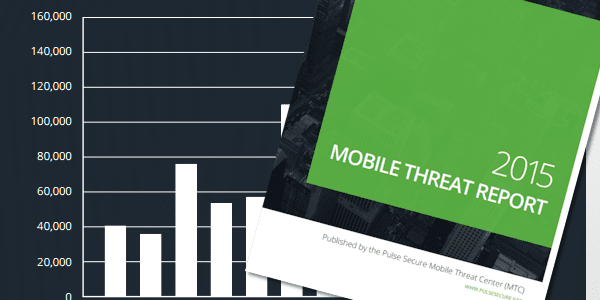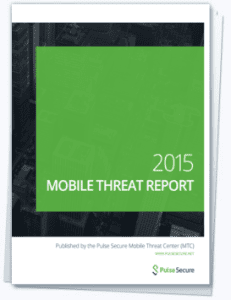2015 Mobile Threat Security Report from PulseSecure

With the growing necessity to stay connected at all times through mobile devices, it’s only natural that mobile security threats will grow accordingly. It’s true that mobile security especially in the enterprise has gotten better at detecting malware and protecting your data. But there’s another side to that coin; the more sophisticated mobile security gets the smarter and more complex the malware becomes.
The 2015 Mobile Threat Report from PulseSecure highlights and analyzes past and future threats to the enterpise. It also dispels old cautions and shows where to direct your focus as mobile technology and malware evolve in the coming year.
“2014 saw more mobile malware development in a single year than any year. With nearly one million unique malware samples identified, it Is no wonder that the mobile security industry reports seeing year-over-year increases in actual detection rates encountered by Android users. 2015 is certainly going to be the year when mobile device users begin to take device security seriously because the attackers already have been.”
The Mobile Threat Report lays to rest the biggest rivalry in the mobile tech world: Android vs iOS. While it’s true that Android has more malware than iOS, it’s because malware follows the market. Android holds 85% of the smartphone market and is wildly more popular outside of the US. PulseSecure’s research proves that the risk factor of Android and iOS have is relatively the same and both need to be secured to the highest extent.
The report also focuses on the different kinds of malware and what malware is more common in the enterprise environment.
“Enterprise networks, while continually hardened at the perimeter, still lack the necessary controls to appropriately deal with the ever increasing BYOD push coming from employees. PC and mobile malware developers know this paradigm exists and they are actively attempting to leverage the inherent weakness of mobile devices accessing corporate resources and intellectual property.”
Malware developers are very aware of BYOD and know that people tend to be lazy about updating and protecting their personal devices. To them, this is the foot in the door they need to attack the enterprise and steal information.
PulseSecure predicts that this will be the year that the users join the IT department in taking mobile security threats seriously because they will hopefully understand how serious malware is in the enterprise now that it has become much more prominent. But this isn’t only a hope, it’s also a necessity; with all of this malware being developed for every kind of device, employees need to be responsible for their devices and need to be aware of the kind of malware that could potentially be on their devices and where it comes from.
“2015 is shaping up to include some of the best innovation the mobile industry has ever experienced. There will be new discoveries, new technologies, and existing giants in the vendor space will test the limits to increase productivity while ensuring the confidentiality, integrity and availability of data.”
The PulseSecure Mobile Threat Report breaks down the major threats that enterprises have faced in mobile security and threats that they will face in the future. Along with the results of major studies they have conducted, PulseSecure lets you know exactly what to be aware of and how to defend against it.






















